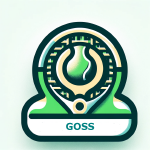Mastering Cross-Dominance
The Tennis Whisperer program’s primary goal is to help you play better using the skills you already have. In this message, we focus on overcoming your natural dominance—particularly in footwork.
From birth, we are neurologically predisposed to favor either the right or left side, often leading us to rely on one dominant hand and sometimes one eye. When learning tennis, initial coaching often emphasizes this natural dominance, further ingraining these preferences.
What many don’t realize is that you can be right-handed but have a dominant left foot or left eye, a phenomenon known as “cross-dominance.”
For example, right-handed, left-eyed players often find forehands easier because the dominant eye remains in sight of the ball. Backhands, however, can be challenging, as players may struggle to maintain the ideal stance while keeping the ball in view. The solution? An open stance can help neutralize the eye dominance, allowing for more balanced play.
While strength training can develop your non dominant side, improving balance requires more than muscle alone. Coordination among your eyes, hands, and feet is essential for consistent performance on the court.
Consider the return of serve. Moving toward the ball from a standing start while maintaining balance relies heavily on foot dominance, which affects stance, stroke, and footwork.
In our short video, we demonstrate techniques to “balance out” foot dominance by building new neural pathways. Notice how our model, Pamela, uses a crossover step to trap the ball on either side. Practicing with a partner is ideal, but a wall can work well if you’re training solo.
Start slowly, and be patient with yourself—it takes time to rewire your neural pathways, especially if you’ve played for many years.
The good news? You can teach an experienced player new tricks. So, enjoy the learning process and have fun as you expand your skills!
The Tennis Whisperer








